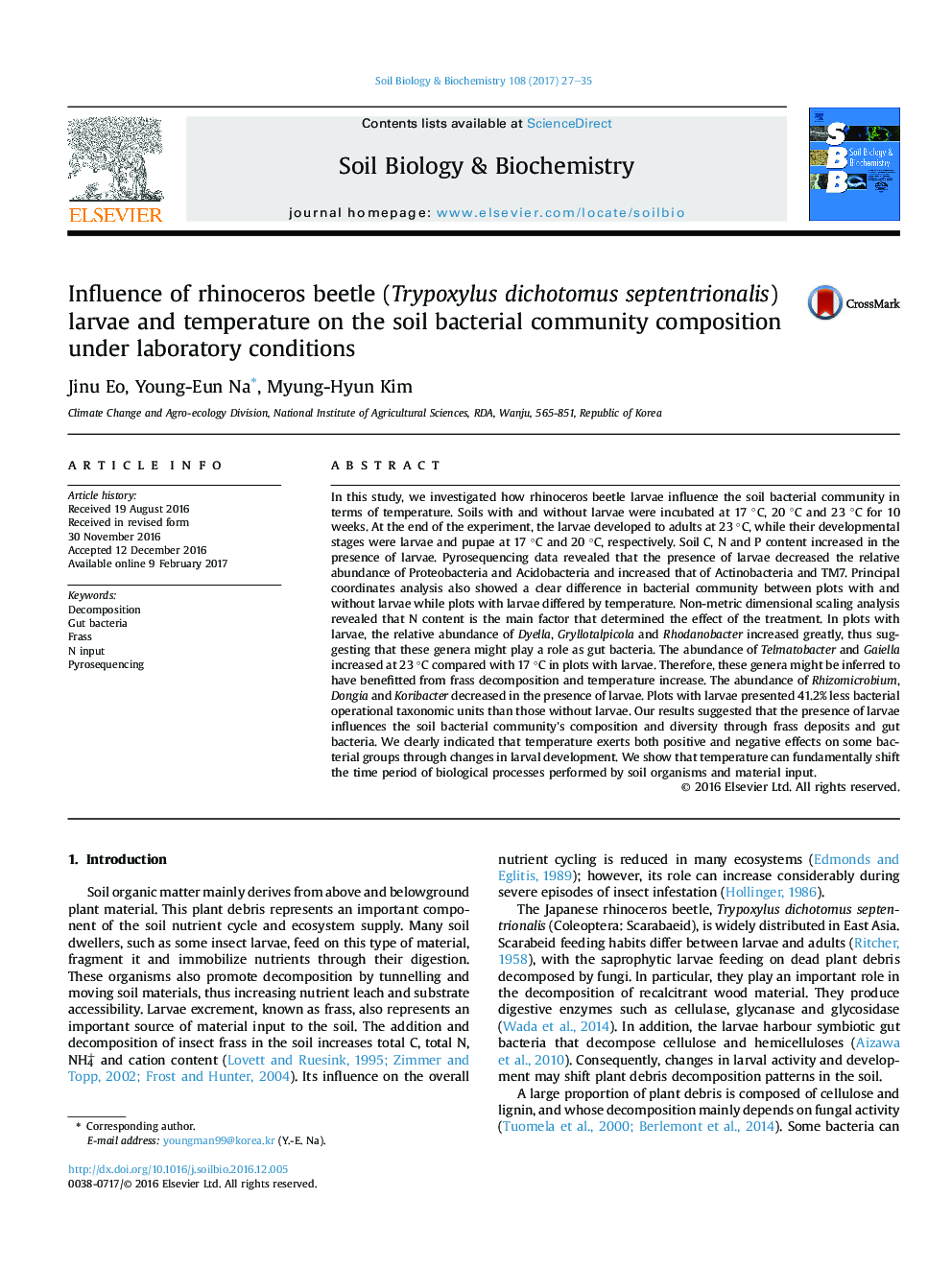| Article ID | Journal | Published Year | Pages | File Type |
|---|---|---|---|---|
| 5516532 | Soil Biology and Biochemistry | 2017 | 9 Pages |
â¢Larvae influenced bacterial composition through frass deposits and gut bacteria.â¢N content is the main factor that determined the effect of the treatment.â¢Dyella, Gryllotalpicola and Rhodanobacter could be involved in gut activity.â¢OTUs decreased by 41.2% in the presence of larvae.â¢Temperature influenced bacterial community composition through larval development.
In this study, we investigated how rhinoceros beetle larvae influence the soil bacterial community in terms of temperature. Soils with and without larvae were incubated at 17 °C, 20 °C and 23 °C for 10 weeks. At the end of the experiment, the larvae developed to adults at 23 °C, while their developmental stages were larvae and pupae at 17 °C and 20 °C, respectively. Soil C, N and P content increased in the presence of larvae. Pyrosequencing data revealed that the presence of larvae decreased the relative abundance of Proteobacteria and Acidobacteria and increased that of Actinobacteria and TM7. Principal coordinates analysis also showed a clear difference in bacterial community between plots with and without larvae while plots with larvae differed by temperature. Non-metric dimensional scaling analysis revealed that N content is the main factor that determined the effect of the treatment. In plots with larvae, the relative abundance of Dyella, Gryllotalpicola and Rhodanobacter increased greatly, thus suggesting that these genera might play a role as gut bacteria. The abundance of Telmatobacter and Gaiella increased at 23 °C compared with 17 °C in plots with larvae. Therefore, these genera might be inferred to have benefitted from frass decomposition and temperature increase. The abundance of Rhizomicrobium, Dongia and Koribacter decreased in the presence of larvae. Plots with larvae presented 41.2% less bacterial operational taxonomic units than those without larvae. Our results suggested that the presence of larvae influences the soil bacterial community's composition and diversity through frass deposits and gut bacteria. We clearly indicated that temperature exerts both positive and negative effects on some bacterial groups through changes in larval development. We show that temperature can fundamentally shift the time period of biological processes performed by soil organisms and material input.
